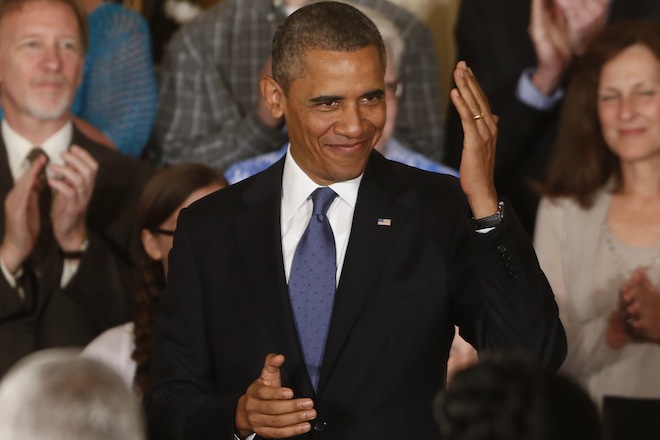Though there will be variations across the country, most Americans will be able to choose from multiple health insurance plans and pay lower-than-expected premiums for coverage on the Obamacare health insurance marketplaces, according to data released Wednesday by the U.S. Department of Health and Human Services.
According to the administration’s analysis of data for the 36 states participating in the federal marketplace, with some additional information from 11 states with state-based marketplaces, 95 percent of Americans will be able to choose between two or more health insurance carriers and will live in states where premiums are lower than originally estimated by the Congressional Budget Office.
It’s the definitive look at the insurance market with less than a week to go until the marketplaces open for enrollment.
“We’ve done a pretty good job of getting affordable options on the shelves,” Jeanne Lambrew, deputy assistant for health policy to Obama, told reporters Tuesday in advance of the report’s public release. “That is success that we’ve gotten to the point where we can say that.”
On average, people will have a choice of 56 different insurance plans — depending on which state you live in, though, that figure could range from seven (in Alabama) to 106 (in Arizona). The average number of insurers in a state is eight, though that again ranges from one to 13 in different states.
As for premiums, before tax credits kick in, they will average 16 percent below the Congressional Budget Office’s original estimates for a silver-level plan (which covers 70 percent of costs). The number of insurers in a state is directly tied to how low premiums will be, Lambrew noted. Arizona, with an average of 106 plans to choose from, had the second-lowest average premiums for a 27-year-old adult: $166 a month. Wyoming, with an average of 16 plans, had the highest average premium at $342 a month.
But then the tax credits take effect. Those knock the premium for that 27-year-old, projected to earn $25,000, down to $145 in most states. For a family of four making $50,000, the credits take the premium price down from more than $1,000 in some states to $282.
The numbers before and after tax credits drop even further for bronze-level plans (which cover 60 percent of costs), often below $100 on average when tax credits are accounted for. White House officials routinely note a recent study that found 6 in 10 uninsured Americans will be able to purchase coverage for less than $100 a month.
Some might still find it preferable to pay the individual mandate penalty ($95 for the year or 1 percent of their income, whichever is greater), as Kaiser Health News reported Tuesday.
The marketplaces open for enrollment Oct. 1. Coverage starts Jan. 1, 2014.






